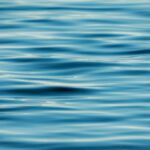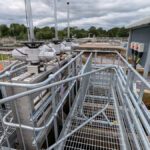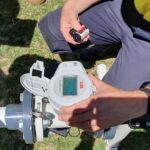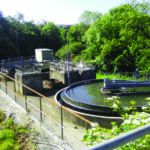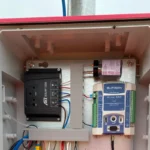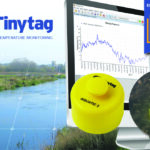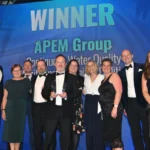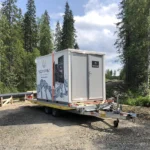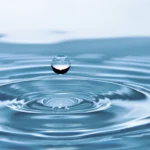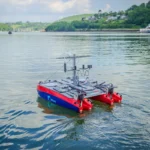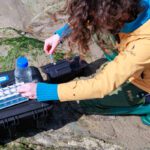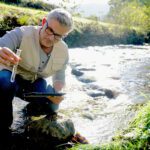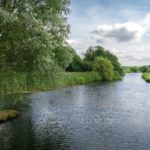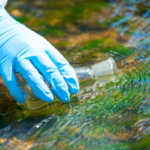Latest UKWIR projects available for expression of interest
Expressions of interest (EOI) are being sought by UKWIR for expert partners to develop the evidence base, insight, knowledge and recommendations to respond to...
Ultrasonic flow measurement drives efficiency improvements at Five Fords WwTW
Engineers working on a project in North Wales have employed novel techniques to improve wastewater treatment efficiency, reportedly at a fraction of the cost...
AMP8 delivery requires data for nature approach
A data-driven approach coupled with greater use of nature-based solutions offers a promising path for UK water, says Ryan Pearson of remote monitoring firm...
Next generation flow measurement drives sustainable water management
Sustainability is a huge concern for organizations tasked with providing people with fresh water. Almost two thirds of the world’s population already experience severe...
New paper examines the elusive nature of liquid brines on Mars
Determining the conditions in which brines are stable could be key to better understanding the climate and potential habitability of Mars (words: University of...
70% of ocean microplastics are the type found in clothes, textiles and fishing gear...
Three of the world’s top five hotspots for marine microplastic pollution are in Europe, according to new data collected by sailors and teams competing...
Ensuring flow compliance at Fowey sewage works
Small wastewater treatment works (WwTWs) frequently present significant physical challenges for instrumentation and control engineers. However, a compliant flow measurement facility has been installed...
River monitoring drone boats arrive in UK
Autonomous and remote-controlled drone boats that can measure discharge flow rate and water quality in rivers are available in the UK, seemingly for...
Remote datalogger shortlisted for WWEM award
OTT HydroMet’s XLink datalogger has been shortlisted for the WWEM 2024 ‘Most Innovative Water Monitoring Solution’ award.
XLink is a unique Wi-Fi enabled datalogger...
Submersible data loggers monitor the meteorological effects on freshwater macroinvertebrates through time
Freelance freshwater biologist, John Davy-Bowker, uses Tinytag Aquatic 2 data loggers in a long-term river monitoring project in Dorset. With three loggers each in two chalk streams, River Frome and River Piddle, John is able to accurately collect water temperature data and compare it to external water level data and macroinvertebrate samples.
Water quality monitoring project wins water industry award
A continuous water quality monitoring project has been the the winner in the ‘Pollution Mitigation Initiative of the Year’ category at the Water Industry...
Continuous metals monitor reveals environmental improvement opportunities
A new continuous metals monitoring technology was recently trialled at a river by a Talc production plant in central Finland. The trial was conducted...
Water quality in international spotlight at Aberdeen event
Experts in water quality from 17 different countries will be descending on Aberdeen next week for a three-day international workshop.
The event, being co-led by...
USVs set to collect water pollution data in SW England pilot
A consortium of British marine technology companies has secured Innovate UK funding to deploy non-invasive Uncrewed Surface Vessels (USVs) for water quality monitoring in...
Endotoxin detection technology drastically cuts time for assessing water quality, says group
An important advance is claimed for a technology that allows water quality to be assessed in a matter of minutes.
The new Bacterisk technology was...
Flood risk proven by groundwater monitor
West Oxfordshire District Council (WODC) in the UK recently refused a planning application on the grounds of flood risk. The proposed development included the...
Flowmeter testing on a pipeline
This article contains paid for content produced in collaboration with iCenta Controls.
Instrument specialist iCenta Controls details a demonstration of its Metri Pro-Lite ultrasonic flowmeters...
Group fine-tunes portable sensor for detecting water-borne PFAS below EU threshold
A startup developing specialized biosensors, Grapheal, and the EDYTEM laboratory*, have announced the fine-tuning of a portable device for monitoring water-borne PFAS pollution. Made...
UK’s first battery-powered EDM monitor to gain MCERTS certification
The LIDoTT®, a multi-sensor monitoring system designed and developed by wastewater monitoring specialists, Detectronic, is the UK’s first battery-powered EDM monitor to gain MCERTS...
New approach to monitoring freshwater quality can identify sources of pollution, and predict their...
The source of pollutants in rivers and freshwater lakes can now be identified using a comprehensive new water quality analysis, according to scientists at...


